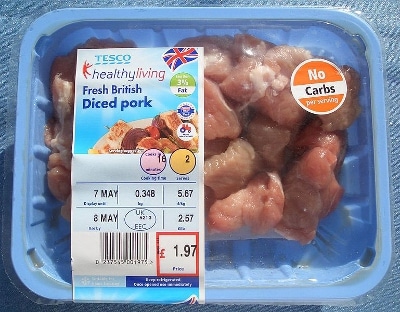Despite much enthusiasm, the adoption of nanotechnology in the food industry has been slow and limited. Due to restrictions imposed by increased costs, uncertain legislation and fear of a consumer reaction, food manufacturers have been reluctant to push research into proposed "nanofood" technologies, and those that are still being considered are at a very early development stage.
In the realm of food packaging, however, nanotechnology is being adopted much more rapidly. Whilst there are still concerns about the degree to which nanomaterials can leach into food from the packaging, and the effect they may have on the health of consumers, most research so far looks promising, and the benefits are highly tangible - several nano-enhancements for packaging are already on the market, helping to prolong the shelf life of food and making it easier to manufacture, process, and manage.
Barrier Packaging
For some time now, food has been packaged in a protective, oxygen-free atmosphere. Standard packing film made from flexible plastics, however, is slightly permeable to oxygen and other gases. Over time, this means that the protective atmosphere can leak out, and oxygen can leak in, damaging the food.
A coating of metal or glass, which are totally impermeable to gases, would prevent this from happening - this is obviously impractical however, as it would reduce flexibility, and would be much more expensive than plastic packaging.
This is where nanotechnology comes to the rescue - a coating just a few nanometres thick is sufficient to create an impermeable layer, without compromising on flexibility or adding a great deal to the cost.

Figure 1. Schematic of a nanostructured, multi-layer barrier film for use in packaging. The polyamide and metal nanofilms ensure impermeability to gases and moisture, keeping the product fresh for longer, whilst retaining the flexibility of the polyester and polyolefin films.
Antimicrobial Packaging
As well as behaving as a simple passive barrier, packaging can be enhanced to actively reduce the growth of harmful microbes. Antibacterial coatings most often use silver nanoparticles, which are becoming more and more common in everything from wound dressings to electrical appliances.
Other antimicrobial materials have been investigated, and will most likely see increased use in packaging in the coming years. These include zinc oxide nanoparticles, which become more antibacterial as their particle size gets smaller, and chitin, which is a natural substance found in the shells of crustaceans like crabs and shrimps.
Active or "Smart" Packaging
Researchers have started to explore the possibilities of "smart" packaging. Rather than just keeping food from going off for as long as possible, packaging with embedded smart materials and flexible nanoelectronics could actively control the environment inside the packaging, and alert consumers when the food has begun to decay.
Self-cooling packaging has been suggested, which would use a chemical or physical process, such as evaporation of a gas, to keep the temperature inside the packaging cool. Powered systems could also use a thin-film photovoltaic cell to power cooling using a thermoelectric material.
This would reduce the need for large-scale refrigeration along the supply chain, although it is unclear whether or not there would be a cost benefit in this case.
Self-healing polymers have been under investigation by researchers for quite some years now, and some examples have appeared on the market. Use of these materials as an outer layer in food packaging could allow small punctures and tears in the wrapping, reducing wastage due to damaged packaging.
One interesting development is the use of nanoparticles to create colour-changing plastic packaging which indicated when food is going off. There are two main mechanisms to achieve this - chemical and physical.
The chemical mechanism uses a chemical indicator which changes colour in the presence of gases given off when food oxidizes.
The physical mechanism uses nanoparticles embedded in the polymer layers which change their optical properties depending on their relative position in the lattice structure. This can be designed so that an intense colour is produced when the packaging stretches, creating an obvious indication of gas-releasing decomposition.
RFID Tags
RFID (Radio Frequency Identification) tags have been used for some years now. They work much like a barcode, uniquely identifying a large number of products, but they work at a distance of up to tens of metres.
Nanotechnology techniques are already used in the manufacture of RFID tags, and improvements in these techniques in the coming years will result in smaller, cheaper RFID systems. This will make them ever more common - it is likely that they will eventually replace barcodes altogether.

Figure 2. Bar codes and sell-by dates could soon be a thing of the past in food packaging, replaced by RFID tags and smart materials to alert consumers to the food going off. Image credit: Wikimedia Commons.
Conclusion
The research clearly shows that nano-enhanced packaging has much to offer the food industry. Benefits range from stronger and more flexible films, to smart packaging which can vastly simplify stock management and monitor food condition.
However, as with many burgeoning areas of nanotechnology, there are some concerns which must be raised. It is not yet completely clear to what extent nanoparticles embedded in packaging films can leach into food products, and what the effects of exposure to various nanomaterials on consumer health might be.
The sustainability of nano-enhanced packaging must also be considered. Whilst multilayered thin films may perform excellently, they will most likely be very difficult to reuse or recycle, and may use limited raw materials and manufacturing processes which are energy-intensive and produce significant quantities of waste.
Whilst these issues are still being explored, one thing is for sure - the next few years will bring important and fascinating developments in nanotechnology for packaging, which may well act as a model for progress across all commercial applications of nanotechnology.
References
- "Nanotechnology in packaging: a revolution in waiting" - Food Engineering and Ingredients, 2008
- "Nanotechnologies for food packaging" - EU Observatory Nano